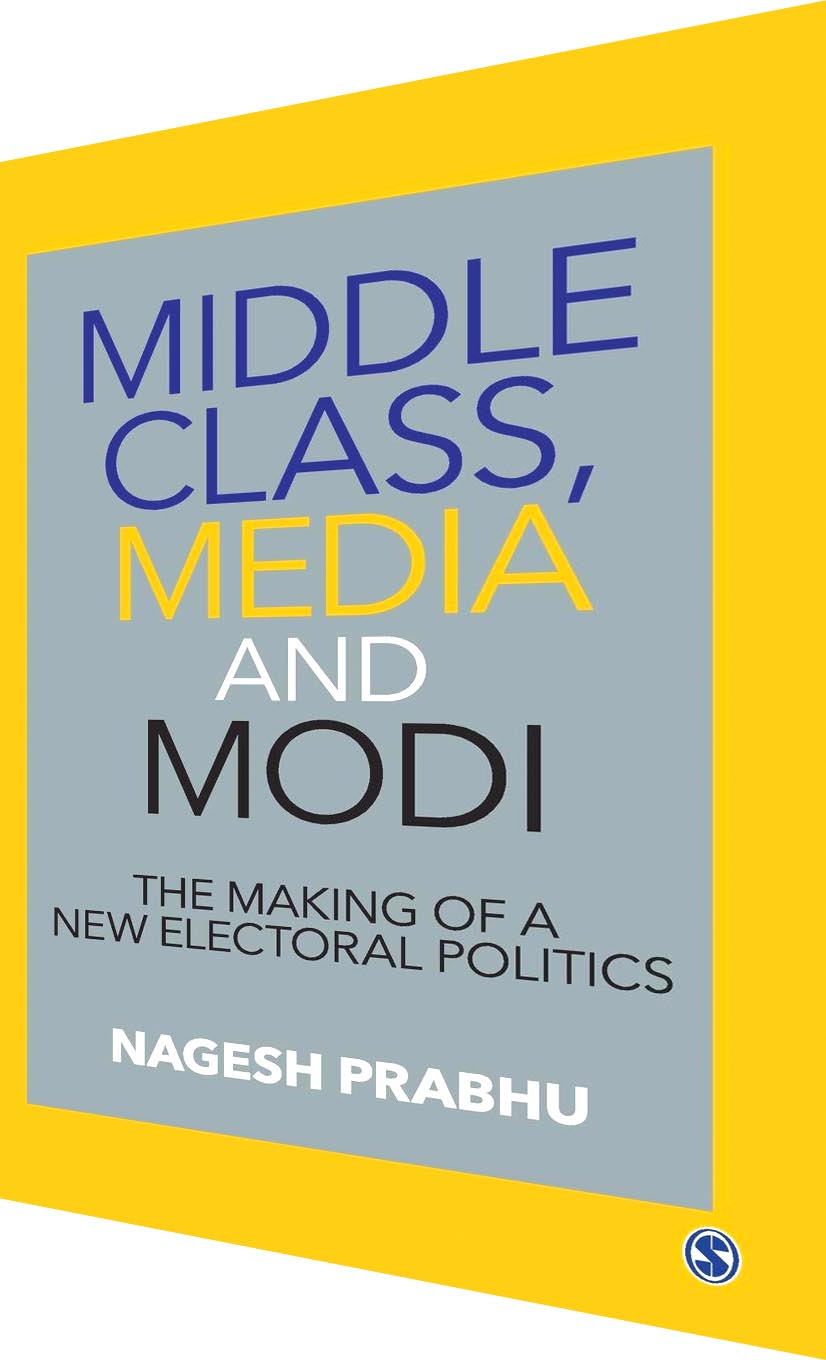
Book: Middle Class, Media and Modi
Middle class, media & Modi: The making of a new electoral politics; Nagesh Prabhu; Sage publications; Rs.350; Pages 374
Ashutosh Kumar (The Book Review)
The ‘exceptionalism’ of the book under review according to its author, a senior journalist, lies in the fact that it seeks to unravel the rise of Modi’s leadership “from the middle class perspective” without adhering to “any ideological point of view”. A reading of the book reveals, however, that it is more about the rise of the middle class and its political and economic implications for contemporary India, than about the media fuelled rise of Narendra Modi.
More tellingly, the volume raises important questions about the specific “role of the middle class in Indian politics”. Who constitutes the middle class? What can be the criteria for identifying the middle class? What is the size of the middle class? Why does this class matter? How does the middle class stabilise and strengthen democracy? What are the political implications of this ever-expanding class on politics? Are they the drivers of recent economic growth?
The entry of a range of new social categories into the middle class, divided broadly in social and spatial terms across India has made it difficult to estimate the size of this class. Not surprisingly, the author says its size could range from a meagre 78 million to a massive 604 million. Whatever the numbers, the great Indian middle class is bigger in size than the entire population of most European countries, and is almost as big as the US population.
The author refers to multiple criteria used by analysts for enumerating the middle class which remain debatable due to the fuzziness of the social category itself. He prefers the ‘objective’ criteria of possession of cultural (education) and material capital.
The expansion of the middle class is attributed to the following factors: creation of new opportunity structures in an increasingly urbanising and industrialising India poised for growth leading to social and economic mobility; the process of agrarian change in the form of land reforms and green revolution; and the introduction of liberal economic reforms.
Explaining why the middle class matters and as to how it stabilises and strengthens democracy, the author not only agrees with modernisation theorists that the middle class is the “backbone of democracy”, but goes on to make the grand claim that it “ensures economic and political stability by promoting social cohesion and mitigating tensions between the poor and rich”. The middle class is also credited by the author for being “drivers of economic growth” as it nurtures “entrepreneurs who create jobs and foster productivity”. It is this consumerist class that propels reforms.
The author also refers to “ideological and cultural shifts” in the ‘new’ middle class which have fanned the winds of neo-liberalism. Pursuing the good life marked by upward mobility, security, luxury and choices, it is this class with its clout in the new social media that has lent its uncritical support and prowess to the transition towards a market economy.
A significant political outcome of the rise of the new middle class is the BJP’s ascendancy to power in the 1990s. This was the decade when despite being the prime beneficiary of State-led economic growth, the middle class drifted away from the Congress, disenchanted with its rhetoric of a secular, socialist and bureaucratic state. The BJP with its right wing economic policies and avowed aim to recapture past glory by creating a ‘new India’ caught the imagination of the middle class in the new millennium.
While one agrees broadly with the book’s arguments, there are still a few questions that could have been answered. First, how come the Modi regime has succeeded in gaining wide support of the marginal classes despite adopting policies primarily for serving the middle class? Second, what explains the significant cultural and ideological shifts towards a far right wing, ultra-nationalist and pro-market ideology within the erstwhile liberal middle class of post-independence India? Third, what prompted the same ‘apathetic’ middle class which during the Anna movement seemed so disenchanted with mainstream parties to enthusiastically support the BJP and Modi?
Also Read: Under dragon shadow: Eat the Buddha


























